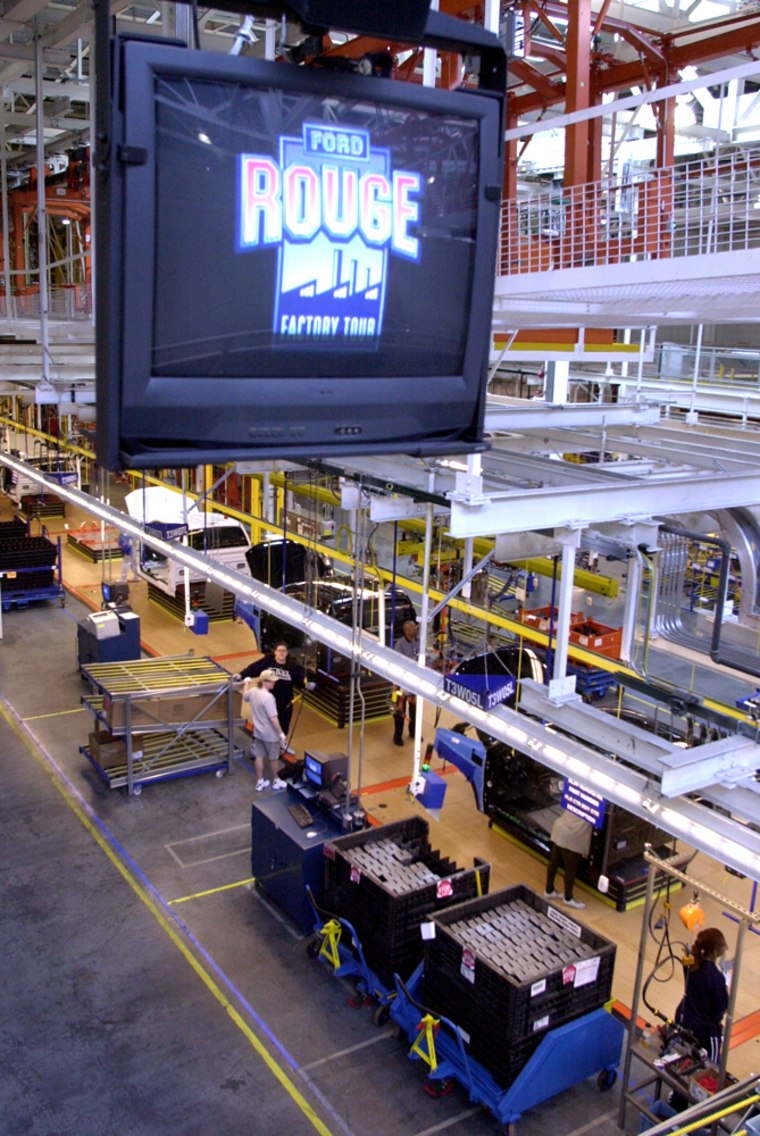Ford Motor Co.’s $2 billion revival of the sprawling River Rouge complex — a risky endeavor while the company battled financial problems — has transformed a gritty piece of American history into a modern model of environmental responsibility and manufacturing flexibility.
The site, where Henry Ford turned raw iron ore into Model A cars, will soon begin producing the company’s best-selling vehicle, the F-150 pickup, and offer visitors an inside look at production after a 25-year hiatus on public tours.
At the new Dearborn Truck Plant, a “living roof” will help heat and cool the building, and assembly lines are flexible enough to allow the company to build nine different models and react more quickly to shifting customer demand.
The result is a marriage of natural and industrial systems in what Ford hopes will be a productive and profitable environment.
Idea is to spread concept
“Should these concepts play out from an economic standpoint, and we believe they will, you’ll see us start to roll them out to other plants,” chairman and chief executive Bill Ford said in an interview. “If the Rouge is only an interesting showpiece, it will have failed. I’d like to see it run for a year before we make any judgments.”
Bill Ford announced plans five years ago to transform the complex from a landscape of slag and soot into “a model of 21st Century sustainable manufacturing.” He stuck to that goal even while the nation’s second-largest automaker went through one of its most dire periods, losing more than $5 billion in 2001 and another $980 million in 2002.
“I thought this was going to be known as Bill’s Folly or something,” Ford said. “And I think early on some of the old-line industrial guys thought it was madness. But what was interesting was to watch the metamorphosis and the naysayers not only become believers, but how quickly it became theirs.”
The 600-acre site has been used for manufacturing since 1917 and employed 100,000 people at its peak as the largest factory complex in the world. But decades of industrial use erased most signs of natural life. Ford hired Virginia architect William McDonough, known for his environmentally sensitive designs, to handle the revival.
Green architect helps out
Bill Ford said the two first met in 1999 in his office atop the company’s world headquarters, which offers a view of the Rouge area. The meeting was arranged by mutual friends as a half-hour get-to-know-you session but stretched on for three or so hours.
McDonough discussed his work for Gap Inc. in San Bruno, Calif., where he designed one of the state’s most energy-efficient buildings. It features a vegetated roof, which helps insulate the building, and a ventilation system that captures the region’s night air and uses it to cool the building during the day.
“The wheels started turning in my head,” Bill Ford said. “I pointed out my window to the Rouge and said, ‘There’s the world’s most famous industrial facility, and yet people around here want to close it.’ I said, ‘Can any of those same concepts apply over there?’
“The more we talked, the more excited we got,” he said.
McDonough designed a plan, but then came the hard part: convincing company leaders the Rouge was worth saving, especially at such a steep price. At the time, Bill Ford was chairman but still a couple of years away from taking over as CEO.
Ford said he simply refused to let the site be mothballed and eventually won over the support he needed. “To me, it would be like not making a Mustang,” he said. “I just wouldn’t let that happen.”
10-acre ‘living roof’
Similar to the Gap offices, the new truck factory has a 10.4-acre “living roof,” which is designed to keep the plant warmer in winter and cooler in summer. Sedum plants absorb and filter water from rain and snow, absorb carbon dioxide and give off oxygen.
On the roof of the new visitor’s center, photovoltaic panels turn sunlight into electricity to supplement the building’s power supply. On the ground, solar collectors heat water for the building.
Green space around the center includes natural water-treatment wetlands and wildlife habitat. Some 85,000 flowering perennials were planted along a new greenbelt parkway, along with 20,000 shrubs and hundreds of new trees.
The re-opening of the plant will include new public tours starting May 3 — the first at Rouge in 25 years.
